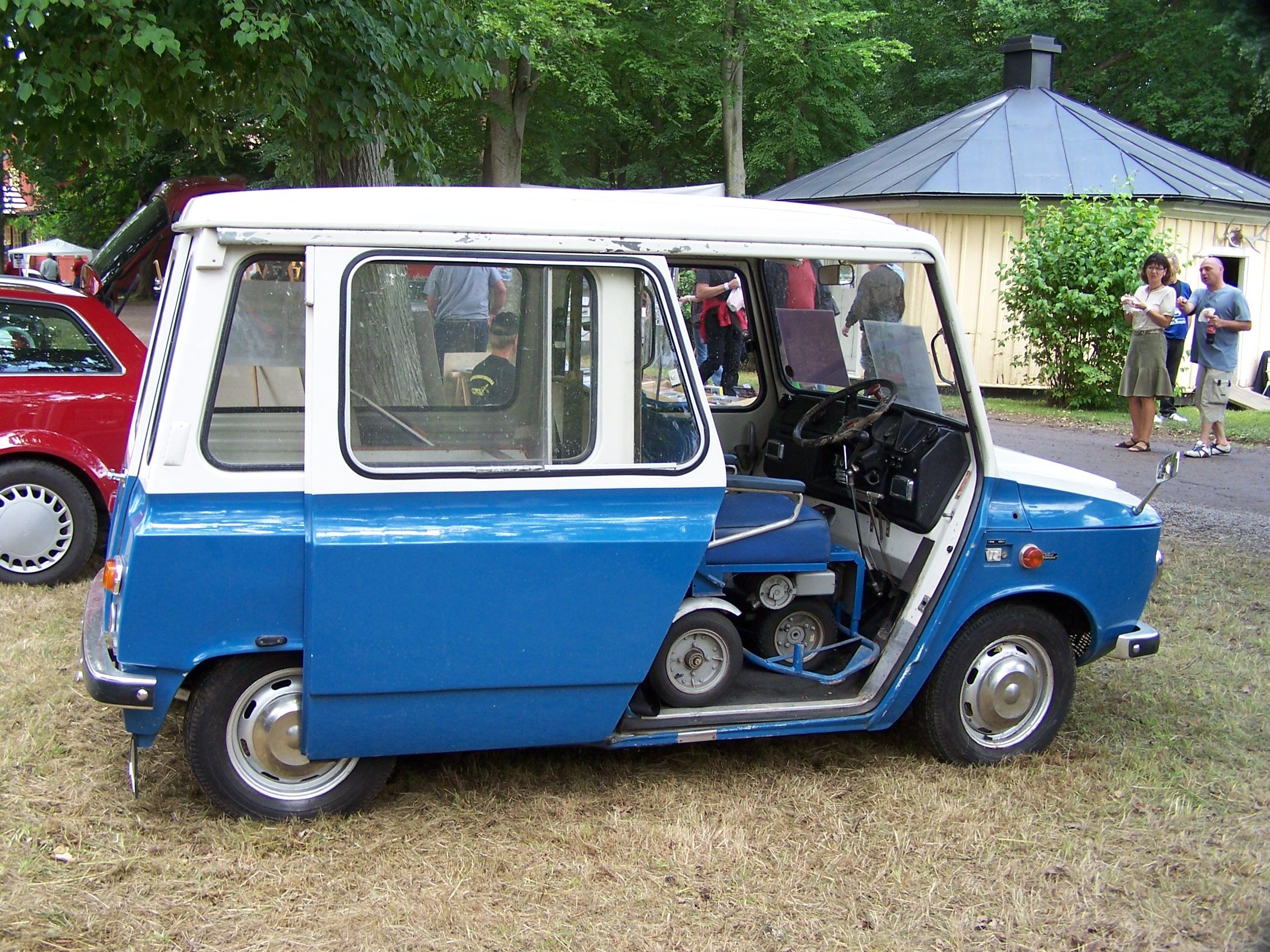Tjorven (vehicle) on:
[Wikipedia]
[Google]
[Amazon]
 The Kalmar KVD440/441, also variously known as Tjorven or DAF Kalmar, is a delivery
The Kalmar KVD440/441, also variously known as Tjorven or DAF Kalmar, is a delivery
Tjorven From Kalmar And Friends
Tjorven from KVAB
TjorvenWebb
Goods manufactured in Sweden Cars of Sweden DAF vehicles Vehicles with CVT transmission Postal vehicles {{van-stub
van
A van is a type of road vehicle used for transporting goods or people. There is some variation in the scope of the word across the different English-speaking countries. The smallest vans, microvans, are used for transporting either goods or ...
based on the DAF 44
The DAF 44 is a small family car that was introduced in September 1966 by the Dutch company DAF. It was the first car to be built at the company's new plant at Born in Limburg. Styled by Michelotti, it represented a cautious move upmarket ...
, made in Sweden. The vehicle inherited the air-cooled, 844-cc boxer engine and Variomatic
Variomatic is the continuously variable transmission (CVT) of the Netherlands, Dutch car manufacturer DAF Trucks, DAF, originally developed by Hub van Doorne. It is a stepless, fully-automatic transmission, consisting of a V-shaped drive-belt, ...
transmission from the DAF 44
The DAF 44 is a small family car that was introduced in September 1966 by the Dutch company DAF. It was the first car to be built at the company's new plant at Born in Limburg. Styled by Michelotti, it represented a cautious move upmarket ...
. The 440 was the postal version, while the 441 was intended for private buyers and had more comfortable front seats as its most notable revision. Kalmar also presented a pickup version (the "Last", meaning ''cargo'' in Swedish) and five-seater passenger version called the Kombi in October 1969, but neither entered production.
In 1963 the then '' Postverket'' (Swedish Mail) needed a new vehicle for mail delivery, and contacted Kalmar Verkstad
Kalmar Verkstad AB (''KVAB'') was a Swedish train and automobile manufacturer in Kalmar, Sweden that made the Tjorven and Terminal. KVAB was founded in 1902 and acquired by ABB in 1990, with the train manufacturing eventually becoming owned b ...
, who developed and built it between 1969 and 1972. On the export market it was simply called Kalmar. In addition to the heating provided by the air-cooled engine, to provide appropriate heating for postmen, some units were fitted with a gasoline-powered Eberspächer heater under the driver's seat, with a dedicated exhaust pipe. The engine was not particularly durable and hurt the Tjorven's reputation, while causing significant warranty claims on the company.
"Tjorven" was a nickname given to the Kalmar as its frumpy but sympathetic appearance was reminiscent of a contemporary Swedish television character of that name. The design was by Swedish industrial designer .
It was right-hand drive
Left-hand traffic (LHT) and right-hand traffic (RHT) are the practices, in bidirectional traffic, of keeping to the left side or to the right side of the road, respectively. They are fundamental to traffic flow, and are sometimes called the ...
for easy driver access to road side letter box
A letter box, letterbox, letter plate, letter hole, mail slot or mailbox is a receptacle for receiving incoming mail at a private residence or business. For outgoing mail, post boxes are often used for depositing the mail for collection, altho ...
es, and frame-built with a fiberglass
Fiberglass (American English) or fibreglass (English in the Commonwealth of Nations, Commonwealth English) is a common type of fibre-reinforced plastic, fiber-reinforced plastic using glass fiber. The fibers may be randomly arranged, flattened i ...
bodywork.
Production ended in 1972 with about 2,000 built, most of them for mail delivery. The Swedish air force used 12 of them for support functions such as collecting the brake chute for J35 Draken and filling up the pilot's oxygen. They were in use until 1976.
References
External links
Tjorven From Kalmar And Friends
Tjorven from KVAB
TjorvenWebb
Goods manufactured in Sweden Cars of Sweden DAF vehicles Vehicles with CVT transmission Postal vehicles {{van-stub